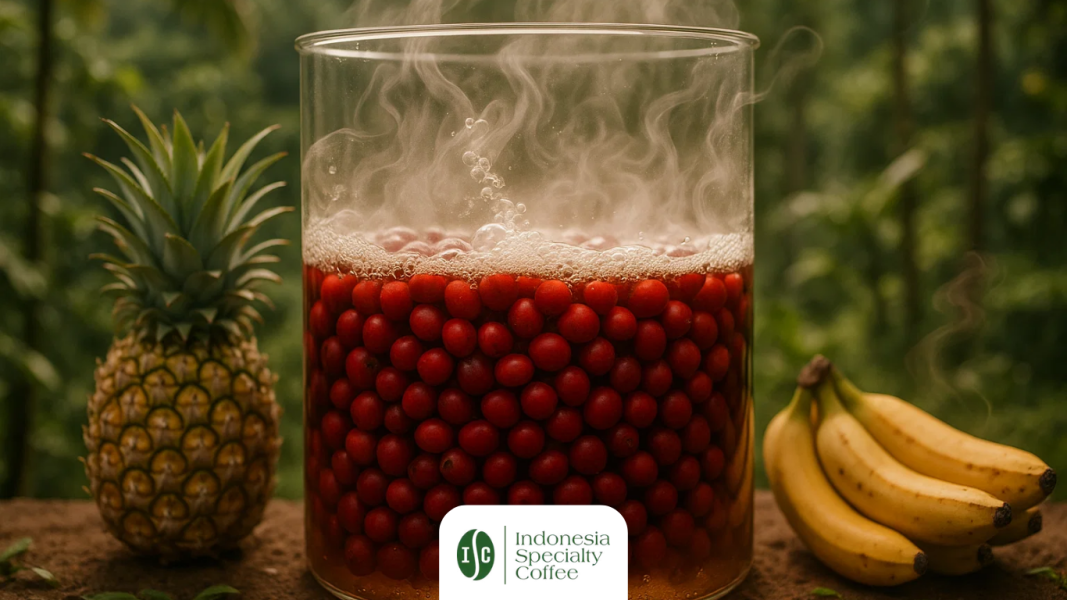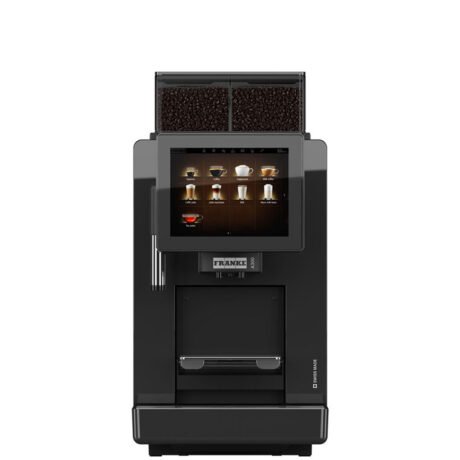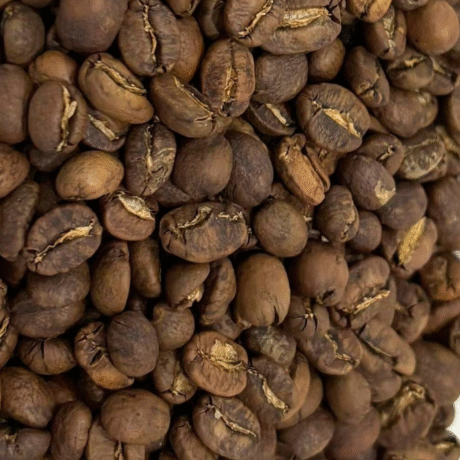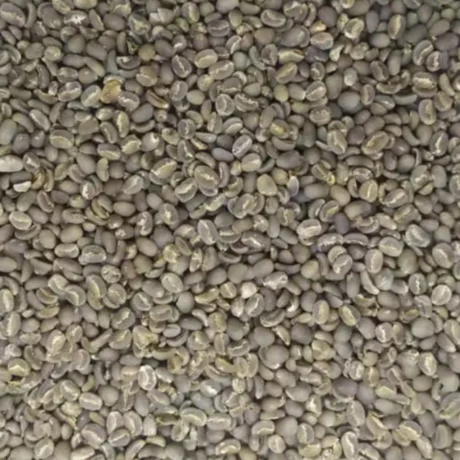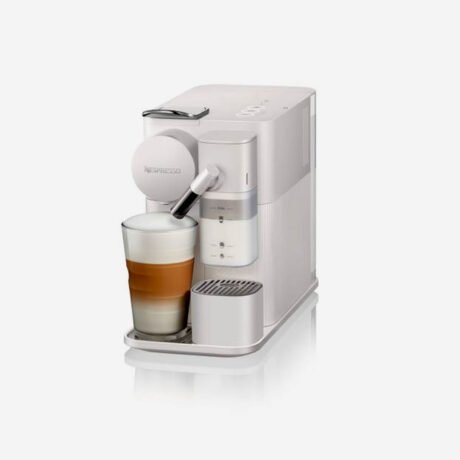A New Chapter in Specialty Coffee Begins
What if your morning brew tasted like banana, jasmine, or tamarind? Sounds more like a fruit punch than a coffee, right? Yet this is exactly what’s emerging from a new frontier in post-harvest processing called hybrid carbonic maceration coffee. Born from winemaking techniques and now adapted to Indonesian Arabica beans, this method is producing vibrant, fruit-forward flavors—and the specialty coffee world is taking notice.
In a groundbreaking study in South Sulawesi, researchers experimented with carbonic maceration and natural inoculants to elevate Indonesian coffee’s global reputation. Let’s explore how this technique works, why it matters, and what it means for the future of flavor.
What Is Hybrid Carbonic Maceration Coffee?

Hybrid carbonic maceration coffee is a fermentation technique where coffee cherries are sealed in a CO₂-rich tank, allowing fermentation to take place inside the fruit, not just on its surface. Natural inoculants like pineapple, banana, jasmine, and rose enhance the process, giving each batch a signature aroma and taste.
Unlike traditional washed or natural processes, this method:
- Enhances fruity and floral flavor notes.
- Reduces acidity and caffeine content.
- Offers better control over fermentation conditions.
Curious about other processing techniques? Learn more in our guide to specialty coffee processing.
How Indonesia Is Leading the Way in Hybrid Coffee Fermentation
Indonesia is already famous for its coffee-growing regions like Gayo, Toraja, and Lampung. Now, with hybrid carbonic maceration, producers are pushing flavor boundaries further.
In the recent study, four fermentation treatments were tested:
- F1: Control (no inoculants)
- F2: Pineapple, yeast, and sugar
- F3: Banana, jasmine flower, and yeast
- F4: Pineapple, yeast, sugar, and rose flower
Sample F2 stole the show with a cupping score of 85.5—packed with notes of dried fruit, tamarind, and raisin. All samples except the control met the SCAA criteria for specialty coffee.
Need help picking the right beans? Check out our guide on choosing the best Aceh Gayo green coffee beans.
The Science Behind the Flavor: How It Works
Using Arduino-based systems, researchers monitored temperature, pH, and pressure throughout fermentation. The CO₂ injection creates an anaerobic environment that triggers the formation of esters and alcohols—compounds responsible for fruity, complex aromas.
Here’s what made the difference:
- Fermentation at 29°C to stimulate microbial activity.
- CO₂ injected once, preserving flavor while controlling acidity.
- Natural additives like pineapple and jasmine created layered flavor profiles.
For example:
- F3 offered chocolaty, spicy, clove-like notes.
- F4 had hints of brown sugar, honeyed florals, and herbal layers.
This careful balance of temperature, pressure, and inoculants sets hybrid carbonic maceration coffee apart.
How It Compares to Other Specialty Coffees
You’ve probably heard of civet coffee, famous for its exotic production method. Yet civet coffee scores average 79–84 in SCAA ratings. By contrast, hybrid carbonic maceration coffee regularly exceeds scores of 85.
Sample F2 alone achieved:
- Excellent in aroma, flavor, body, and aftertaste.
- Very Good in cleanliness and sweetness.
Want to enhance your home brewing experience too? Try these 7 secret tricks to make your coffee better than a coffee shop.
Why Hybrid Carbonic Maceration Coffee Matters for Farmers and the Future
This technique isn’t just about taste. It’s about empowerment.
Benefits include:
- Higher cupping scores = better prices.
- Lower caffeine and acidity = wider market appeal.
- Flavor uniqueness = stronger brand identity for origin-based marketing.
For smallholder farmers, it’s a game-changer. In a world where coffee quality defines value, hybrid carbonic maceration offers an affordable, scalable way to produce world-class beans.
Learn more about Indonesia’s specialty coffee market and how producers are thriving globally.
Conclusion: The Next Wave of Coffee Is Already Brewing
The future of coffee isn’t just dark, bold, and bitter—it’s bright, juicy, and full of life. Hybrid carbonic maceration coffee is redefining what’s possible in a cup. By blending tradition with innovation, Indonesia is poised to become a leader not just in volume, but in quality.
So the next time you taste a hint of banana or jasmine in your coffee, remember—it’s not an accident. It’s science, nature, and craftsmanship at work.
Would you try hybrid carbonic maceration coffee if it tasted like fruit punch in a cup?

